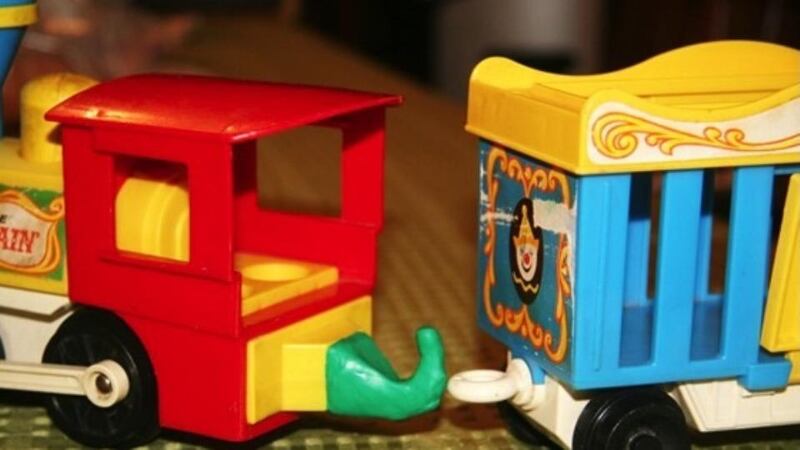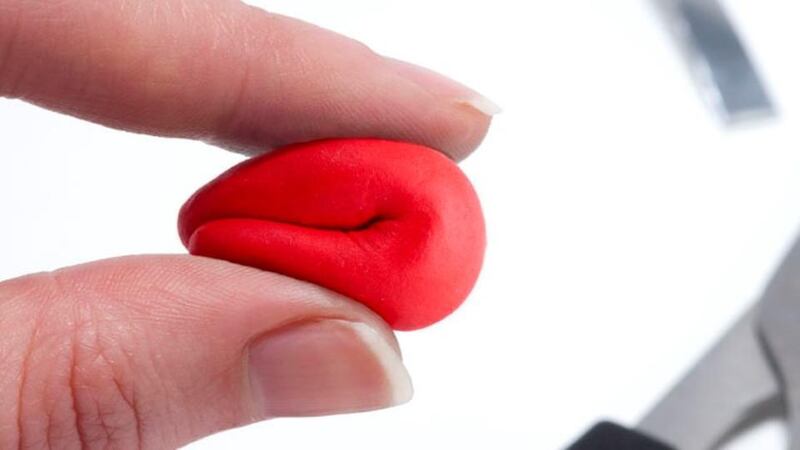Jane Ní Dhulchaointigh pulls her bicycle out of its rack in company’s office in Tudor Road in East London to display her invention’s latest use.
A little blob of her product, Sugru, along with magnets, holds her lights securely to the handlebars, far more safely than any of the fiddly plastic clips such lights usually come with.
An idea in her head 11 years ago, Sugru, the self-setting rubber that allows people to fix almost anything, almost anywhere, became an internet star after the first batch was made nearly five years ago.


The latest development – Sugru sold with a box of magnets – has met with a similar welcome: “(It) sold out of in a matter of hours,” says Ní Dhulchaointigh, raised in Keatingstown, Co Kilkenny.
“The idea is that you can make basically anything magnetic with Sugru, because Sugru sticks to almost any material and it sticks really well to magnets,” she goes on.
However, she is the first to accept that Sugru enthusiasts – and such they are given the strength of the worldwide community the product has generated – have been using it with magnets for years.
A photographer filming engineers in “the bowels of a huge ship off West Africa” used it to steady his camera flashes, others, more prosaically, held tea-towels on fridge doors with them. “We are just making it more easy for people to do it. A lot of our community in the early days tended to be the more imaginative people in the world.
“But, increasingly, as interest in Sugru has grown we are increasingly seeing customers who are not creative people, necessarily.
“But they are people who need to fix their fridge, or their dishwasher, or their kids’ school-shoes, or whatever,” she explains, in a spartan room in her company’s Hackney offices.
Ní Dhulchaointigh thought of the concept during a quiet moment studying production in the Royal College of Art in 2003, but years of work followed to make a product out of an idea.
The company's history is unusual, since "we were in the public eye from the beginning; living through social media" on the back of a rave review by the Daily Telegraph . "So from the beginning, when we were tiny, people thought we were a bigger brand than we were just because we were in the press. But there were only two of us, then."
Today, Sugru is on the cusp – it has customers in 151 countries; employs 30 people in Hackney and will make its four millionth individual sachet, each still filled by hand. “It is really durable, people use it to fix boats. Some engineering people use it to help build computers, but the more common thing is fridge drawers, doors, dishwasher racks, replacing little bits of plastics that come off printers, for example.
“It is used for a lot of things that you can’t get spare parts for, but where you can’t just glue things on, you need to rebuild,” she says.
Not just something for geeks
From the off, however, Ní Dhulchaointigh intended that Sugru should be a product that "is in everyone's kitchen drawer," not just something for geeks.
That still means conquering the world of retail, rather than just online. So far, Sugru is sold by hardware store, B&Q, a sports chain and a computer store.
In Ireland it’s available in places such as Dublin’s Science Gallery and Maplins.
“US retail is on the horizon. We sold on (the shopping TV channel) QVC in UK last year. Now, we introducing on QVC in the US, which is about 10 times bigger.”
However, she is cagey about some plans, particularly about where the company will be in a few years time given that it exists in a world where it is a minnow.
“I don’t really want to talk about it. Our strength is building the market and brand. The vision is for it to be a 21st century brand that is in everyone’s kitchen drawer.
“We, as a tiny company in London with the creative skills, are not going to have the huge distribution to take this global. We will at certain points be looking for partnership opportunities,” she says.
She spoke with the industry giants – the 3Ms and Henkels, all multi-billion companies – from the beginning: “We do have a continued dialogue with most of those companies,” she says, hesitantly.
“I think they are very interested,” she continues, the hesitation lasting longer, “We meet people . . . We keep them informed.” By now, the silence of the hesitations fills the room.
If anything, the giants are intrigued: “Normally they would do all of their market development, brand development before they launch. We are doing it in quite a 21st century way.
“We put it out there and said to people, “We think it is useful, what would you do with it? We had no idea at the start of all things that people would find it useful for.”
Everywhere, there are signs of a company growing up; its new chief operating officer (COO) comes from retail. New automated filling machines are planned for later in the year. Paraic Begley’s arrival as COO is “really huge”. Already a shareholder, Begley worked with Australian company Sola in Wexford before it was bought by Carl Zeiss: he has years of experience.”
Ní Dhulchaointigh the inventor has had to become a manager too: not always easy: “I’ve learned that the wrong people, even if they have experience, are the wrong people. I have made mistakes in hiring people and have had to deal with it. The times where I haven’t dealt with it quickly enough have been painful, but they have to have the right cultural fit.
'You can't have people floating'
"I have had to do it quite a few times, and you just have to do it," she says. "You can't have people floating, who aren't delivering, because everybody works so hard. It becomes blatantly obvious."
Meanwhile, Sugru may make the journey from the kitchen cupboard to industry, in time, following interest from automotive engineers. “That is really exciting, they are making millions of parts per day, but that is a way-off.”
Then, there is the toy market. Sugru has passed all health-and-safety standards and are working on a new development that will pass toy regulations, “safe for kids, a permanent play dough. “Everything with children is super, super strict, so we are sponsoring a PhD in Queen Mary University locally, Mile End, one of the top materials’ universities in the country,” she says.
Meanwhile, Sugru has faced its first attempts at copyright theft, where Chinese fraudsters have begun copying the company’s packaging, but not Sugru itself, since they still cannot copy it.
“That is what happens when you get to a certain stage. It is not worth anybody’s while copying until you have proved that there is a market. We do have a patent in China and we have been lucky that they are not replicating our materials, they are just fraudulently replicating our packaging.
“They are filling it with play dough. If somebody buys it from a Chinese website they’ll get a very disappointing experience. But I wouldn’t want to really focus on that,” she says, carefully (sugru.com).
Readers' fix-it challenge
The Sugru philosophy is that we shouldn’t have to keep buying new stuff just because small parts are broken. We want to see the best fixes you’ve done and the story of how you did them, using Sugru or other materials. From small household repairs to bigger jobs, from a fix of your own to a great repair you’ve spotted by someone else.
Whether simple, skilled or just plain funny fixes we want to celebrate mending in all its forms. Submit a high-resolution photo and a short description of the mending story to fixit@irishtimes.com – the five best examples will win an eight-pack of Sugru and a Sugru + magnets kit.
Five other Irish inventions
Ejector seat
James Martin, born in Co Down in 1893, invented an aircraft ejector seat. An engineer who moved to London in the 1920s, he was invited by the Ministry ofAircraft production to find a way of helping the survival rates of pilots who could not otherwise escape planes. By the 1940s, his ejector seats were being fitted in all British military jets and has since saved thousands of lives.
Torpedo
Castlebar native Louis Brennan, the engineer and inventor recently commemorated by the Taoiseach, was known in his adopted home of Australia as the Wizard of Oz. Best known for inventing a torpedo in 1877, he also came up with the world first gyroscopic monorail.
Tractor
If the brand-name of Massey-Ferguson sounds familiar, it's because the tractor was developed by Henry Ferguson, born in Co Down in 1884. The agricultural engineer and inventor also built a monoplane.
Submarine
Engineer John Holland, born in Co Clare, in 1841, emigrated to the US in the 1870s and developed the first sub commissioned by the US Navy.
Seismology
Born in Dublin in 1810 Robert Mallet graduated from Trinity in science and maths. A member of the Royal Irish Academy, he presented a paper there in 1846 on the Dynamics of Earthquakes, which was considered to be a foundation of modern seismology, a term that Mallet coined.











